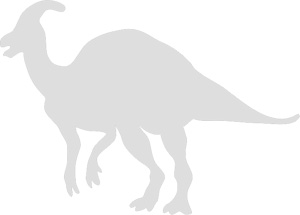Every month, 100,000 readers use the Dinosaur Database, but we receive no support from you. Developing and updating the database requires a lot of work. If you want it to remain open and be updated, please support us via the "Buy us a coffee" button available on every page or via the Support page.
Dinosaur: Emiliasaura alessandrii

| Length*: | 4.9 m | 16.1 ft |
| Weight*: | 530 kg | 1,168 lb |
*The largest known specimen
Period
Epoch: Early Cretaceous
Stage: Valanginian
Years: 139.8–132.6 Ma
Details
Status: valid
Author: Coria et al.
Year: 2024
Distribution
Area: South America
Country: Argentina
Region: Neuquén
Formation: Mulichinco
Description
Emiliasaura alessandrii
Emiliasaura alessandrii is a mid-sized rhabdodontomorph ornithopod from the Early Cretaceous (Valanginian stage, 139.8–132.6 million years ago) discovered in the Mulichinco Formation, Neuquén, Argentina. It represents the first rhabdodontomorph found in South America and is the oldest known member of this group.
Physical Characteristics
The holotype specimen includes parts of the forelimbs and hind limbs, with a complete right hind limb and portions of the pelvis. Unique features include a sigmoidal ilium and blunt ungual phalanx on digit II, suggesting specialized foot mechanics. It shares affinities with basal iguanodontians and shows traits typical of the Rhabdodontomorpha, such as an elongated femur with a prominent fourth trochanter.
Diet and Feeding Habits
As an herbivorous ornithopod, Emiliasaura likely fed on low-lying plants such as ferns and cycads. Its dental and jaw structure suggests adaptations for efficient plant processing, characteristic of basal ornithopods.
Habitat and Distribution
Emiliasaura lived in a floodplain environment during the Valanginian, characterized by river systems and lush vegetation. It coexisted with dicraeosaurid sauropods and carcharodontosaurid theropods in the rich ecosystems of northern Patagonia.
Behavior and Social Structure
Like other ornithopods, Emiliasaura was likely a social, herd-living dinosaur. Its agile body and specialized limbs may have helped it navigate through dense vegetation and evade predators.
Discovery and Research
The holotype was discovered in 2009 by Carlos Alessandri and further excavations yielded additional materials in 2011. The species was described in 2024 by Coria et al. from fossils found in two localities near Pilmatué, Neuquén. The discovery of Emiliasaura highlights an unexpected distribution of rhabdodontomorphs in Gondwana, suggesting a complex evolutionary history.
Significance and Interesting Facts
The significance of Emiliasaura lies in its position as the most basal and primitive rhabdodontomorph discovered to date. It provides crucial insights into the evolution and biogeography of ornithopods during the Early Cretaceous in South America.
Locations
Sources
Material: Holotype specimen MLL-Pv-001: coracoid, the proximal end of a scapula, a humerus and a complete right hind limb. Paratype specimen MLL-Pv-006: vertebral elements, haemal arches, an incomplete pelvis, and nearly complete hind limbs
References: Coria, R. A., Cerda, I. A., Escaso, F., et al. (2024). "First Valanginian (Early Cretaceous) ornithopod (Dinosauria, Ornithischia) from Patagonia." Cretaceous Research.



